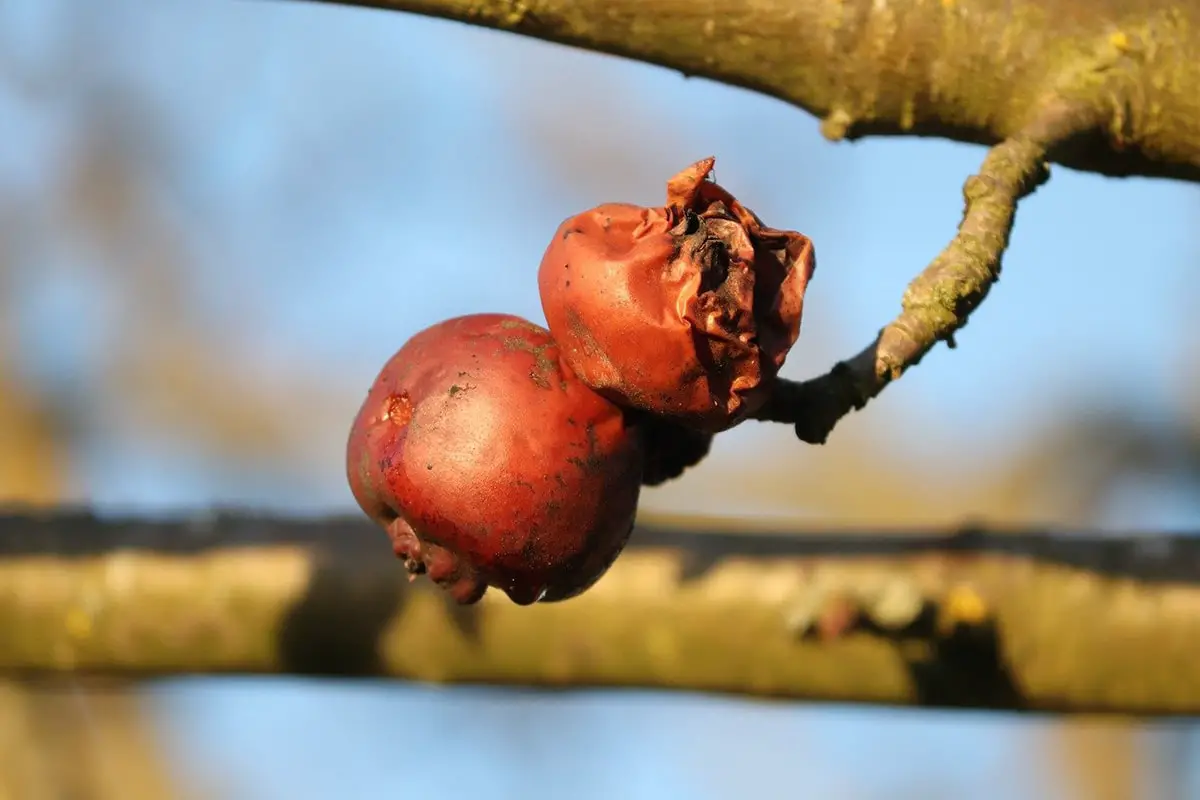

Humans are not the only living things that produce hormones. Also animals and plants have this ability. One of the most famous and widely used plant hormones is ethylene, whose applications are various.
If you want to know more about this plant hormone, I recommend that you continue reading this article. We will talk about what ethylene is, what it is for and where to find it in nature. In addition, we will discuss which fruits should not be gathered in our pantry or in the refrigerator due to ethylene.
What is ethylene and what is it for?


There are so many different hormones and not only in humans, but also in animals and plants. Ethylene, for example, is a plant hormone in the form of a gas. Its purpose is regulate the processes related to senescence and maturation both flowers and fruits and vegetables. Therefore, it is also known as the plant aging hormone.
When this gas builds up, these vegetables ripen quickly, which ends up causing a loss of quality and a decrease in its useful life. In addition, there are certain free pathogens in the air that can also affect the quality of flowers, fruits and vegetables, and that increase their proliferation when there is ethylene in the environment. In this way, perishable plant tissues degenerate.
As for the application of ethylene, there are many uses for this hormone. Generally used in plasticizers, coatings, solvents, and antifreeze. The use that is given basically depends on the compound. Let’s see some examples:
- Polyvinylchloride: Lining of walls, floors, pipes, tanks, etc.
- Polyethylene: Tubes, pipes, drains, containers, thermoformed parts, insulation, etc. It is a resistant and flexible material.
- Polytetrafluoroethene: Gaskets, bushings, cookware liners. Also known as Teflon.
- Polyacrylonitrile: Manufacture of textile fibers. It is a strong and easy to dye compound that can also be spun.
- Ethylene oxide: Chemical intermediate in the manufacture of non-ionic detergents, ethylene glycol, polyethylene glycols and their derivatives. It is also used as a fumigant. It is a colorless, flammable and mobile liquid or gas.
Where is ethylene found in nature?


As we mentioned earlier, ethylene is a hormone produced by plants. Both flowers and fruits and vegetables are living things that continue to breathe even after harvest. When they breathe, they produce not only carbon dioxide (CO2) and water (H2O), but also ethylene (C2H4).
As for fruits and vegetables, the positive effects of ethylene are various. During the early stages of development of fruits and vegetables, they have toxic compounds that disappear when they ripen. Therefore, thanks to ethylene they become edible. In addition, it softens its texture. Also the levels of starch and acid are reduced, while the level of sugars is increasing. In this way, fruits and vegetables become tastier. Another point to note is that this hormone improves the color of the skin and the aroma they give off.
However, after having collected the fruits and vegetables at their ideal point of maturity for marketing, all these beneficial effects of ethylene are no longer positive. When the fruits have reached the ideal maturity, they continue to produce this hormone, which ends up causing them to age until they become rotten.
What fruits should not be gathered?


Being a gas, ethylene remains in the environment. There are fruits and vegetables that stand out for being great producers of this hormone, while others are very sensitive to it. These two types should not be put together, to prevent the second group from deteriorating faster. When an already ripe fruit releases ethylene, the ripening of the fruits around it is accelerated. In this way they begin to decompose much faster than normal. Some examples of this would be the following:
- Carrots: They acquire a bitter taste.
- Asparagus: Its leaves increase roughness.
- Lettuce: Reddish spots appear.
- Broccoli: It loses color.
- Tomatoes Ripe Greens: They become soft.
- Potatoes: The skin wrinkles and begins to rot.
Instead, other fruits and vegetables stand out for producing a lot of ethylene. Therefore, they should not be combined with those mentioned above. We are going to see below a list of the fruits that produce the most ethylene gas:
- Avocado
- Onion
- Plums
- Apple
- Mango
- Melon
- Banana
- Tomatoes
- Grapes
You learn something new every day. If you did not know what ethylene is, I hope I have clarified this question. In addition, it is very practical to know which fruits and vegetables should not be put together so that they last longer fresh and tasty. This way we save a little money when making the purchase and we maintain the benefits that these vegetables can bring us for longer.
